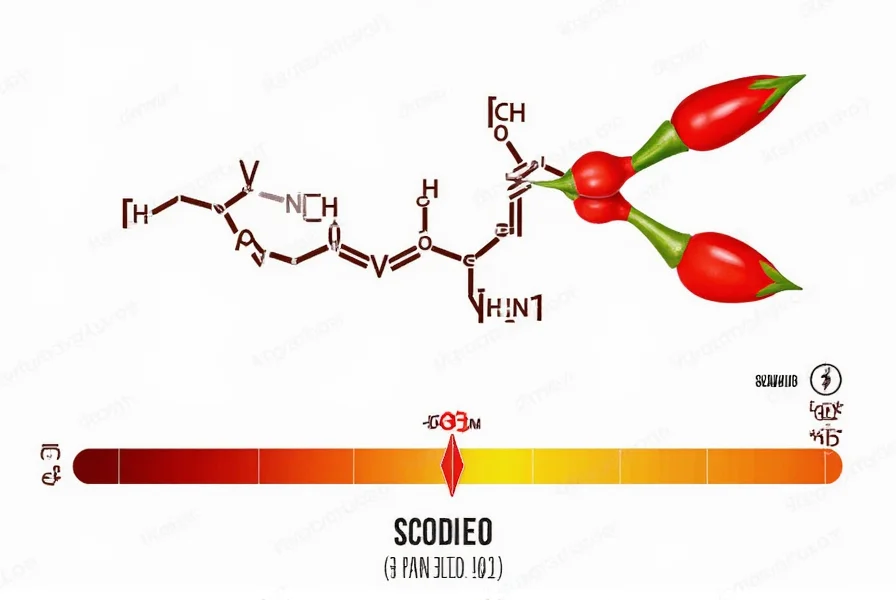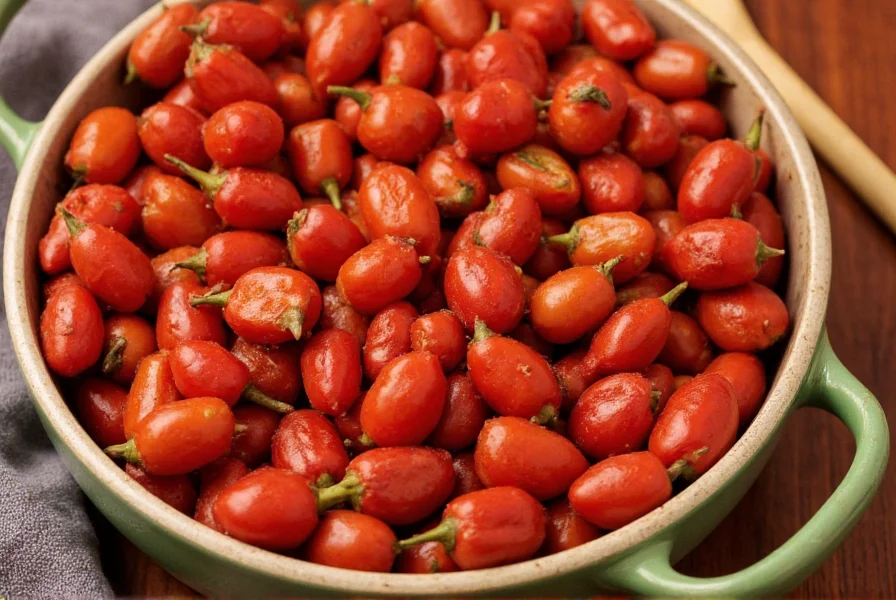Understanding what chili means requires distinguishing between two primary contexts: the pepper itself and the culinary dish. This comprehensive guide clarifies both meanings while providing essential information about varieties, heat levels, and culinary applications.
The Botanical Reality: Chili Peppers Explained
Chili peppers belong to the Capsicum genus within the nightshade family (Solanaceae). These flowering plants produce fruits containing capsaicin—the compound responsible for their characteristic heat. Native to the Americas, chili peppers have been cultivated for over 6,000 years before spreading globally through trade routes.
Contrary to popular belief, all chili peppers are technically fruits botanically, as they develop from the flower and contain seeds. The heat level varies dramatically between varieties, from the mild bell pepper (zero Scoville units) to the blazing Carolina Reaper (1.4-2.2 million Scoville Heat Units).

Common Chili Pepper Varieties and Their Characteristics
| Pepper Type | Scoville Range | Flavor Profile | Common Uses |
|---|---|---|---|
| Bell Pepper | 0 SHU | Sweet, vegetal | Raw in salads, stuffed dishes |
| Jalapeño | 2,500-8,000 SHU | Grassy, bright heat | Salsas, nachos, pickled |
| Serrano | 10,000-23,000 SHU | Sharp, clean heat | Pico de gallo, hot sauces |
| Habanero | 100,000-350,000 SHU | Fruity, floral, intense | Caribbean sauces, finishing heat |
| Ghost Pepper | 800,000-1,041,427 SHU | Smoky, sweet then brutal | Extreme hot sauces, challenges |
Chili Con Carne: The Dish That Shares the Name
When people ask what is chili in culinary contexts, they're often referring to chili con carne—a hearty stew with Mexican-American origins. Despite the shared name, traditional chili con carne contains no actual chili peppers as primary ingredients but relies on chili powder (a blend of ground peppers and spices).
The classic Texas-style chili features:
- Braised meat (typically beef)
- Chili powder blend
- Onions and garlic
- Spices like cumin and oregano
- No beans (in authentic versions)
Regional variations abound across the United States, with Cincinnati chili featuring Mediterranean spices and served over spaghetti, while New Mexico chili emphasizes fresh roasted green chilies.
Measuring Heat: The Scoville Scale Demystified
Understanding what is chili requires grasping how we measure their heat. Wilbur Scoville developed the Scoville Organoleptic Test in 1912, which determined heat levels through human taste panels diluting pepper extracts until heat became undetectable.
Modern testing uses High-Performance Liquid Chromatography (HPLC) to measure capsaicinoid concentration, then converts to Scoville Heat Units (SHU). This scientific approach has revealed fascinating insights about types of chili peppers and their heat levels, showing significant variation even within the same pepper variety based on growing conditions.

Culinary Applications Beyond Heat
Chili peppers contribute more than just heat to dishes—they add complex flavor dimensions. Understanding how to identify different chili peppers helps cooks select appropriate varieties for specific applications:
- Color development: Many peppers change from green to red as they mature, altering both flavor and heat
- Flavor profiles: From the citrus notes of fresno peppers to the smoky depth of chipotles (smoked jalapeños)
- Cooking techniques: Roasting enhances sweetness, while drying concentrates flavors
Chefs worldwide leverage these characteristics when answering the practical question of what is chili in their culinary context. The same pepper can transform dramatically through preparation methods—fresh serranos provide bright heat in salsas, while dried versions contribute deeper, earthier notes to mole sauces.
Health Considerations of Chili Consumption
When exploring what is chili from a nutritional perspective, research reveals several potential benefits of moderate consumption:
- Rich in vitamins A and C, especially in red varieties
- Contains capsaicin, which may boost metabolism
- Potential anti-inflammatory properties
- May support cardiovascular health when consumed as part of balanced diet
However, excessive consumption can cause digestive discomfort for sensitive individuals. Those with conditions like irritable bowel syndrome should moderate their intake of chili peppers and their heat levels. Always handle extremely hot varieties with gloves to avoid skin irritation.
Global Variations in Chili Terminology
The confusion around what is chili extends to regional naming differences. In British English, the term "chilli" (with double L) commonly refers to the peppers, while "chili" typically denotes the dish. In many Asian countries, specific local names exist for different varieties, with "chili" serving as a general term.
This linguistic variation explains why searches for what is the difference between chili and chilli remain common. The spelling difference generally reflects regional language preferences rather than botanical distinctions.
Practical Tips for Working with Chili Peppers
Whether you're exploring chili con carne vs chili peppers or simply want to incorporate more heat into your cooking, consider these practical guidelines:
- Always wash hands thoroughly after handling hot peppers
- Remove seeds and white membranes for reduced heat
- Start with small amounts and adjust to taste
- Balance heat with dairy, acid, or sweetness
- Store dried chilies in airtight containers away from light
Understanding these fundamentals transforms the question of what is chili from simple curiosity to practical kitchen knowledge. Whether you're selecting peppers at the market or adjusting a recipe's heat level, this knowledge empowers confident culinary decisions.
Frequently Asked Questions
What's the difference between chili and bell peppers?
Chili peppers contain capsaicin that creates heat, while bell peppers have zero Scoville units. All bell peppers are technically chili peppers botanically (same Capsicum genus), but they lack the gene that produces capsaicin, making them sweet rather than spicy.
Why do some recipes use 'chili' and others 'chilli'?
The spelling difference primarily reflects regional language preferences. 'Chili' is the standard American English spelling for both the pepper and dish, while 'chilli' (double L) is common in British English. Neither spelling indicates a botanical difference between the peppers.
Can you reduce the heat of a chili pepper?
Yes, removing the seeds and white placental tissue (where most capsaicin concentrates) significantly reduces heat. Cooking with dairy products like yogurt or cheese can also neutralize capsaicin's effects. Interestingly, adding sugar or acid (like lime juice) creates a flavor balance that makes heat more manageable without actually reducing capsaicin content.
Is chili powder the same as cayenne pepper?
No, chili powder is typically a blend of ground chili peppers, cumin, garlic powder, and other spices, while cayenne pepper is made from a single type of very hot chili (Capsicum annuum). Cayenne is significantly hotter than standard chili powder, with cayenne measuring around 30,000-50,000 SHU compared to chili powder's 500-1,000 SHU.
What gives chili peppers their heat?
Capsaicin, a chemical compound concentrated in the pepper's placenta (white membrane surrounding seeds), creates the burning sensation. This compound evolved as a defense mechanism against mammals. Interestingly, birds don't feel the heat, which helps spread the seeds through bird droppings after consumption.











 浙公网安备
33010002000092号
浙公网安备
33010002000092号 浙B2-20120091-4
浙B2-20120091-4